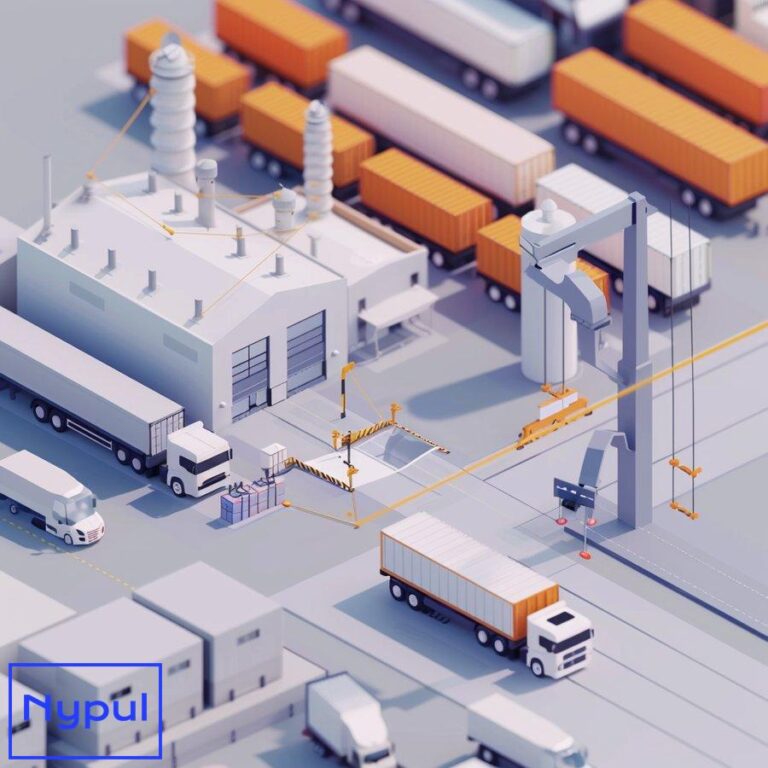What Is a Port Community System
A Port Community System (PCS) is an integrated platform designed to facilitate the seamless exchange of information among various stakeholders involved in port operations. These stakeholders include shipping lines, freight forwarders, customs authorities, terminal operators, and logistics providers. The primary goal of a PCS is to enhance the efficiency and effectiveness of port logistics by streamlining communication and processes.
A PCS operates as a collaborative environment where all parties can access real-time data regarding shipments, schedules, and regulatory requirements. This system enables stakeholders to make informed decisions, reduce delays, and optimize resource utilization. The essence of a PCS lies in its ability to foster collaboration, improve transparency, and enhance operational efficiency within the port community.
The importance of a PCS cannot be overstated, especially in today’s globalized economy where supply chain efficiency is paramount. By providing a centralized platform for information sharing, a PCS helps mitigate the complexities associated with port logistics, ultimately leading to smoother operations and improved service delivery.
How do Port Community Systems function?
Port Community Systems function through a combination of technology, data integration, and stakeholder collaboration. The core components of a PCS include:
Data Exchange and Integration
A PCS facilitates the exchange of data among various systems used by stakeholders. This integration allows for the sharing of critical information such as vessel schedules, cargo status, and customs documentation. By creating a unified data repository, stakeholders can access the information they need without having to navigate multiple systems.

Real-Time Information Sharing
One of the standout features of a PCS is its ability to provide real-time information. Stakeholders can receive updates on cargo movements, delays, and other operational changes as they happen. This immediacy enables proactive decision-making and helps to prevent bottlenecks in the supply chain.
User Access and Roles
Different stakeholders have varying needs and responsibilities, which is why a PCS typically offers customizable user access. Each user can have specific roles and permissions, allowing them to access the information relevant to their operations while maintaining data security. This tailored access ensures that sensitive information is only available to authorized personnel.
Communication Tools
A PCS often includes communication tools that facilitate direct interactions among stakeholders. These tools can range from messaging systems to integrated email notifications, ensuring that all parties are informed and engaged throughout the shipping process. Effective communication reduces misunderstandings and fosters collaboration.
Analytics and Reporting
Modern PCS platforms come equipped with analytics capabilities that allow stakeholders to generate reports on various aspects of port operations. These reports can provide insights into performance metrics, cargo trends, and operational efficiencies, enabling stakeholders to identify areas for improvement.
What are the key benefits of implementing a PCS?
Implementing a Port Community System offers numerous benefits that can significantly enhance port operations. Some of the key advantages include:
Improved Efficiency
By streamlining communication and data exchange, a PCS reduces the time spent on administrative tasks and minimizes delays. This efficiency translates into faster turnaround times for vessels and cargo, ultimately benefiting all stakeholders involved.
Enhanced Visibility
A PCS provides stakeholders with real-time visibility into cargo movements and operational status. This transparency allows for better planning and coordination, reducing the likelihood of unexpected disruptions.
Cost Reduction
Through improved efficiency and reduced delays, a PCS can lead to significant cost savings for stakeholders. Lower operational costs can be achieved through optimized resource utilization and reduced penalties associated with delays.
Regulatory Compliance
A PCS helps stakeholders stay compliant with various regulatory requirements by providing access to necessary documentation and updates. This compliance reduces the risk of fines and penalties associated with non-compliance.
Collaboration and Trust
The collaborative nature of a PCS fosters trust among stakeholders. By sharing information openly, stakeholders can work together more effectively, leading to stronger partnerships and improved service delivery.
Which features are essential in modern Port Community Systems?
![]()
Modern Port Community Systems must possess several essential features to meet the needs of stakeholders effectively. These features include:
User-Friendly Interface
A user-friendly interface is crucial for ensuring that all stakeholders can navigate the system easily. Intuitive design and clear navigation help users access the information they need without extensive training.
Interoperability
Interoperability with existing systems is vital for a PCS to function effectively. The ability to integrate with various software solutions used by stakeholders ensures seamless data exchange and communication.
Mobile Access
In today’s fast-paced environment, mobile access to a PCS is increasingly important. Stakeholders should be able to access the system from their mobile devices, allowing for real-time updates and decision-making on the go.
Data Security
Given the sensitive nature of the information exchanged within a PCS, robust data security measures are essential. This includes encryption, user authentication, and regular security audits to protect against data breaches.
Scalability
As port operations grow and evolve, a PCS should be scalable to accommodate increased data volume and additional users. A scalable system can adapt to changing needs without requiring a complete overhaul.
What steps are involved in implementing a PCS?
Implementing a Port Community System involves several critical steps to ensure a successful deployment. These steps include:

Needs Assessment
Conducting a thorough needs assessment is the first step in implementing a PCS. This involves identifying the specific requirements of stakeholders and understanding the existing challenges in port operations.
Stakeholder Engagement
Engaging stakeholders early in the process is crucial for gaining buy-in and ensuring that the system meets their needs. Regular communication and feedback sessions can help align expectations and foster collaboration.
System Selection
Choosing the right PCS solution involves evaluating various options based on features, scalability, and cost. Stakeholders should consider their unique requirements and select a system that aligns with their operational goals.
Customization and Integration
Once a system is selected, customization and integration with existing systems are necessary. This step ensures that the PCS can effectively share data and communicate with other software solutions used by stakeholders.
Training and Support
Providing training and ongoing support is essential for ensuring that stakeholders can effectively use the new system. Comprehensive training programs can help users become familiar with the PCS and maximize its benefits.
Monitoring and Evaluation
After implementation, continuous monitoring and evaluation are necessary to assess the system’s performance. Gathering feedback from users can help identify areas for improvement and ensure that the PCS continues to meet stakeholder needs.
How do Port Community Systems address security and compliance?

Security and compliance are critical considerations in the implementation of a Port Community System. These systems address these concerns through several measures:
Data Encryption
To protect sensitive information, PCS platforms employ data encryption techniques. This ensures that data transmitted between stakeholders is secure and cannot be intercepted by unauthorized parties.
User Authentication
Robust user authentication processes are essential for maintaining data security. This includes multi-factor authentication, which adds an extra layer of protection by requiring users to verify their identity through multiple means.
Regulatory Compliance Features
Many PCS solutions include built-in features that help stakeholders comply with relevant regulations. This may involve automated updates regarding regulatory changes, as well as tools for managing documentation and reporting requirements.
Audit Trails
PCS platforms often provide audit trails that track user activity and data access. These logs can be invaluable for identifying potential security breaches and ensuring accountability among users.
Regular Security Assessments
Conducting regular security assessments and vulnerability testing is crucial for identifying and addressing potential weaknesses in the system. Continuous monitoring helps maintain a secure environment for all stakeholders.
What challenges arise when adopting a Port Community System?
While the benefits of a Port Community System are significant, several challenges can arise during the adoption process. These challenges include:
Resistance to Change
Stakeholders may be resistant to adopting a new system, particularly if they are accustomed to existing processes. Overcoming this resistance requires effective communication and demonstrating the benefits of the PCS.
Integration Difficulties
Integrating a new PCS with existing systems can be complex and may require significant resources. Technical challenges can arise, leading to delays in implementation and potential disruptions in operations.
Cost Considerations
The initial investment required for implementing a PCS can be substantial. Stakeholders must carefully evaluate the costs associated with the system, including software, training, and ongoing maintenance.
Data Quality Issues
Ensuring data quality is essential for the success of a PCS. Inaccurate or incomplete data can lead to operational inefficiencies and undermine the system’s effectiveness. Stakeholders must prioritize data management practices to address this challenge.
Ongoing Maintenance and Support
Once a PCS is implemented, ongoing maintenance and support are necessary to address technical issues and ensure optimal performance. This requires dedicated resources and may pose a challenge for some organizations.
How have major ports successfully implemented PCS?
Several major ports around the world have successfully implemented Port Community Systems, leading to improved efficiency and collaboration among stakeholders. Notable examples include:
Port of Rotterdam
The Port of Rotterdam has developed a comprehensive PCS known as Portbase, which facilitates data exchange among various stakeholders. This system has significantly enhanced operational efficiency, reduced turnaround times, and improved visibility into cargo movements.
Port of Antwerp
The Port of Antwerp’s PCS, known as Port of Antwerp International, has transformed the way stakeholders communicate and collaborate. By providing real-time data access and analytics capabilities, the port has seen improvements in efficiency and reduced operational costs.
Port of Singapore
The Port of Singapore has implemented a PCS called the Port Community System (PCS) that integrates various stakeholders, including shipping lines and customs authorities. This system has streamlined operations and enhanced compliance with regulatory requirements, contributing to the port’s status as one of the busiest in the world.
What criteria should be considered when selecting a PCS solution?
Selecting the right Port Community System is a critical decision that can significantly impact port operations. Key criteria to consider include:
Functionality
Evaluate the functionality of the PCS to ensure it meets the specific needs of stakeholders. This includes assessing features such as data integration, real-time updates, and communication tools.
Scalability
Consider the scalability of the system to accommodate future growth and changes in operations. A scalable solution can adapt to evolving needs without requiring a complete overhaul.
User Experience
The user experience is crucial for ensuring stakeholder engagement. A user-friendly interface and intuitive navigation can facilitate adoption and maximize the benefits of the PCS.
Vendor Support
Assess the level of support provided by the vendor, including training, maintenance, and technical assistance. Reliable vendor support can help ensure a smooth implementation and ongoing success.
Cost
Evaluate the total cost of ownership, including initial investment, ongoing maintenance, and potential hidden costs. A thorough cost analysis can help stakeholders make informed decisions regarding their PCS investment.
By considering these criteria, stakeholders can select a PCS solution that aligns with their operational goals and enhances the efficiency of port logistics.






